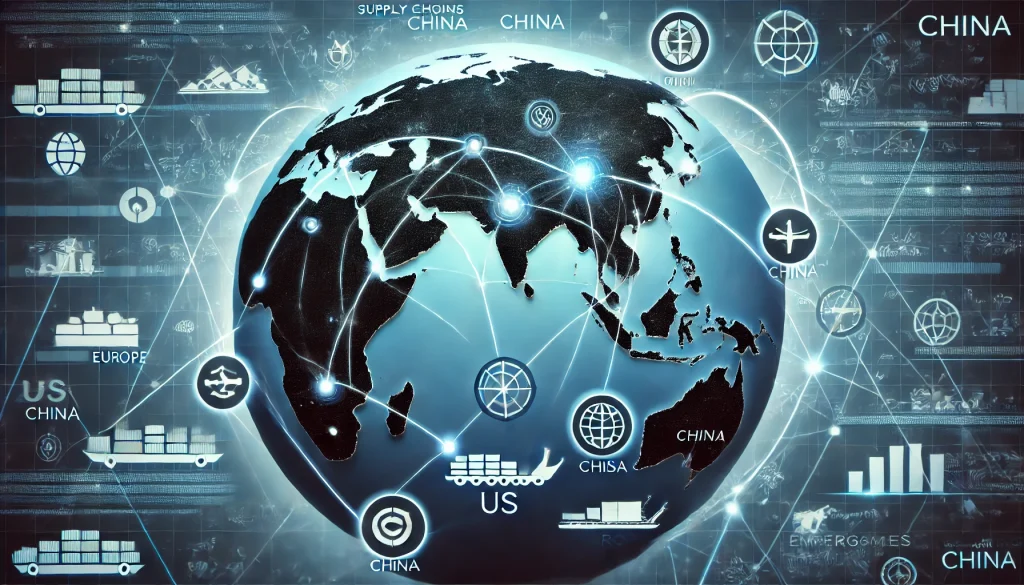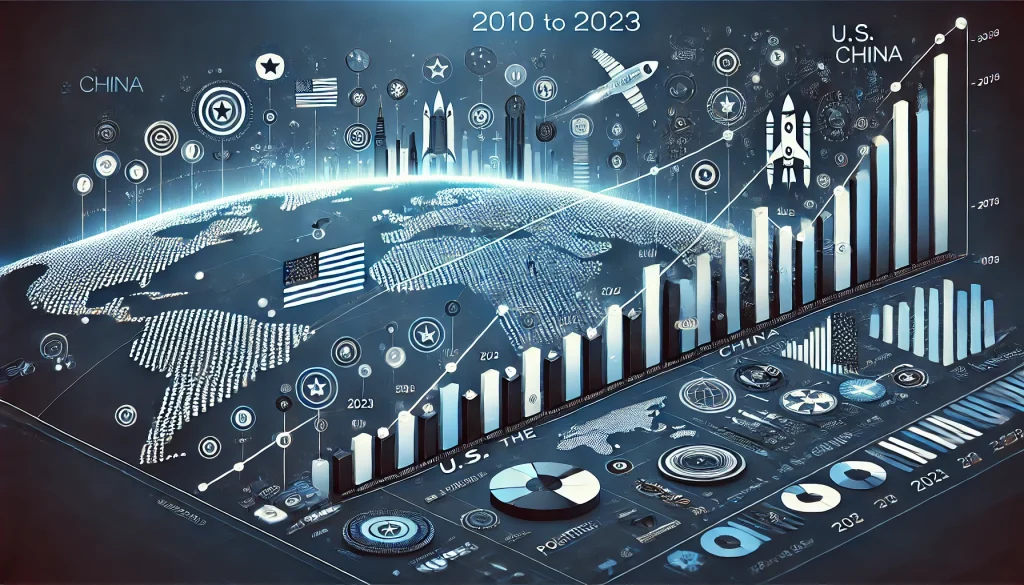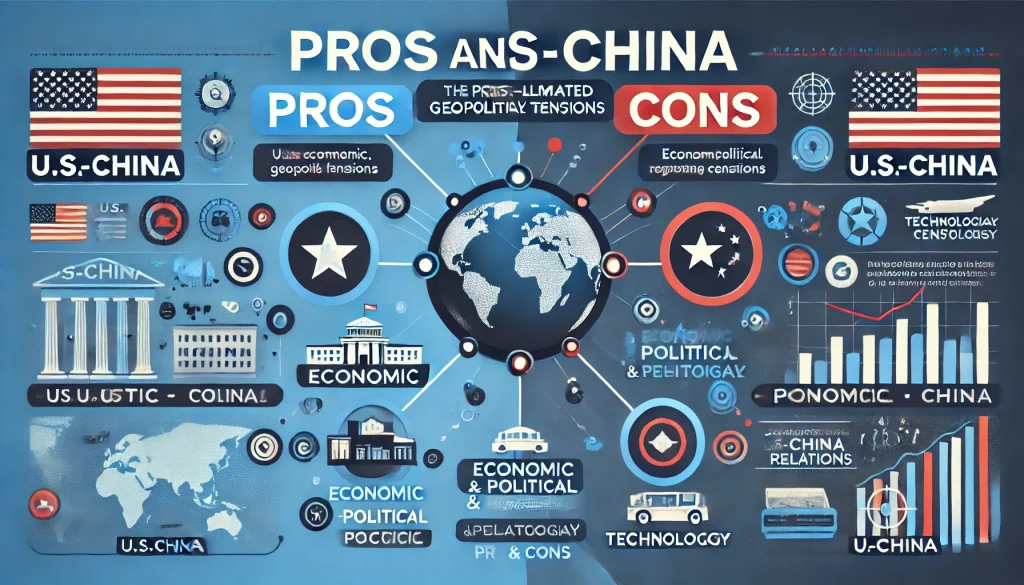
Decoupling from China has become one of the hottest topics in global economic discussions. This shift away from dependence on Chinese supply chains is reshaping industries and influencing global trade. Many governments and businesses are moving production closer to home or to new locations. In this post, we will dive into what decoupling means, its impact on the global economy, and the implications for businesses worldwide.
Overview of Decoupling from China
Decoupling refers to the process of reducing economic dependency on another nation. In recent years, the term has come to represent countries, particularly the U.S. and Europe, distancing themselves from China’s economic influence. This shift is also known as “economic disengagement” or “supply chain diversification.”
Several factors have driven this movement. Countries are worried about being overly reliant on China, especially in critical sectors like technology, pharmaceuticals, and electronics. Trade tensions, national security concerns, and disruptions caused by the COVID-19 pandemic have only accelerated this trend. Decoupling has gained traction as businesses seek to ensure stability in their supply chains, especially as global uncertainties grow.
Key Drivers of Decoupling

Several key forces are pushing global economies and businesses to decouple from China. These drivers highlight the vulnerabilities in relying on a single major supplier for goods and materials.
- Geopolitical Tensions: The ongoing U.S.-China trade war and increasing nationalism have made governments reconsider their ties with China.
- Supply Chain Vulnerabilities: The COVID-19 pandemic exposed weak points in global supply chains, leading companies to rethink where they source materials.
- Technological Rivalry: Countries are in fierce competition with China in critical technologies such as 5G and semiconductors, pushing for domestic production.
- Environmental and Ethical Concerns: Issues like carbon emissions and human rights abuses in certain Chinese industries have prompted companies to move away from Chinese suppliers.
These factors combined are pushing governments and businesses to seek alternatives to China, aiming for more diverse and resilient supply chains.
Historical Context and Evolution of Decoupling
Decoupling from China has not happened overnight. It is the result of a long history of interdependence followed by gradual economic shifts.
| Year | Event/Development | Significance |
|---|---|---|
| 2001 | China joins the WTO | This marked the beginning of China’s rapid integration into global supply chains. |
| 2018 | U.S.-China Trade War begins | Tariffs and trade restrictions led to the first wave of production shifts. |
| 2020 | COVID-19 Pandemic | The pandemic heightened awareness of supply chain vulnerabilities and risks. |
| 2022 | U.S. CHIPS Act | This law incentivizes semiconductor production outside China, marking a major policy shift. |
The current decoupling movement has evolved over the past two decades, with notable events pushing countries to rethink their economic dependence on China.
Implications for Global Supply Chains
The decoupling from China is reshaping global supply chains across a wide range of industries. Companies in sectors like tech, pharmaceuticals, and automotive have started diversifying their production locations to countries such as Vietnam, India, and Mexico.
For instance, tech companies like Apple are moving some production to India. Pharmaceutical companies are also seeking alternatives to China for key ingredients. These shifts impact not only where goods are made but also how efficient and cost-effective these new supply chains can be. Moving production away from China might increase costs for some businesses, but it could also offer long-term stability and reduce the risks of future disruptions.
Pros and Cons of Decoupling from China

| Benefits | Challenges |
|---|---|
| Reduces reliance on a single nation | Higher production costs in alternative regions |
| Promotes economic and geopolitical security | Potential disruptions to established supply chains |
| Opens new opportunities for emerging markets | Limited access to China’s vast consumer market |
While decoupling may reduce dependency and boost security, the transition is not without its difficulties. Increased costs and potential disruptions to current supply chains are serious challenges businesses must consider.
Key Players in the Decoupling Process
Several governments, companies, and economists are leading the decoupling movement, pushing for reduced reliance on China. Notable contributors include:
- U.S. Government: Policies like the CHIPS Act are incentivizing domestic production in critical industries like semiconductors.
- Apple: The tech giant has started diversifying its supply chain by moving production to India and Vietnam.
- Peter Navarro: An economist and strong advocate for reducing U.S. dependency on Chinese manufacturing.
These key players are at the forefront of the decoupling process, influencing global economic trends and supply chain shifts.
Policy Implications of Decoupling from China
The shift away from China has had a major impact on economic policies worldwide. In the U.S., tariffs and sanctions have been used to limit dependence on Chinese goods. The CHIPS Act, for instance, provides incentives for semiconductor production within the U.S.
In Europe, similar policies aim to strengthen domestic industries and reduce reliance on Chinese imports. These changes in trade policies have reshaped international relations and influenced foreign investment flows, pushing companies to reevaluate their global strategies.
Real-World Examples of Decoupling in Action
Apple Shifting iPhone Production to India
Apple has been a leader in the decoupling trend, taking significant steps to diversify its supply chain. The tech giant has begun shifting part of its iPhone production from China to India. This move aims to reduce the company’s reliance on Chinese manufacturing, especially given the geopolitical tensions between the U.S. and China and supply chain disruptions caused by the COVID-19 pandemic. Apple’s Indian manufacturing efforts have expanded rapidly, with partners like Foxconn setting up factories to assemble newer iPhone models. By relocating to India, Apple benefits from a growing local market while maintaining a strategic hedge against future disruptions in its supply chain.
Semiconductor Industry Moving to Taiwan and the U.S.
The global semiconductor industry has faced intense pressure to reduce its dependence on China, particularly in light of growing U.S. restrictions on technology exports to China. Major players like Intel and TSMC have responded by investing heavily in new facilities in Taiwan and the United States. The passage of the U.S. CHIPS Act in 2022 has further incentivized semiconductor manufacturing within the U.S., aiming to strengthen the domestic supply of critical chips used in electronics, cars, and defense equipment. TSMC, a leader in semiconductor production, is building a multibillion-dollar facility in Arizona, reflecting the industry’s strategic move to safeguard critical technology supplies from potential risks associated with Chinese dependence.
Pharmaceutical Companies Diversifying Production
The pharmaceutical sector has also felt the need to decouple from China, where a significant portion of the world’s active pharmaceutical ingredients (APIs) are manufactured. During the COVID-19 pandemic, global reliance on Chinese pharmaceutical exports became a major issue when supply chains were severely disrupted. Companies like Pfizer and Novartis are exploring alternative sources for APIs by shifting production to countries like India and European nations. These efforts aim to improve resilience, avoid bottlenecks, and reduce risks associated with geopolitical tensions and supply chain vulnerabilities
Final Thoughts: The Future of Decoupling from China
Decoupling from China will likely continue to shape the global economy in the coming years. As countries and businesses seek greater control over their supply chains, this trend could lead to significant shifts in global trade. While decoupling offers benefits like security and diversification, it also presents challenges, including higher costs and the potential for supply chain disruptions.
Looking forward, it is essential for businesses and policymakers to stay informed and agile as the global landscape evolves. Decoupling will remain a critical factor in determining the future of international trade and economic growth.
FAQs
What is decoupling from China?
Decoupling refers to the process where countries or businesses reduce their reliance on China for goods, services, and supply chains due to economic or political reasons.
How is decoupling from China affecting global trade?
Decoupling is reshaping global trade by forcing businesses to diversify supply chains and look for alternatives in countries like Vietnam, India, and Mexico, potentially increasing costs and altering trade dynamics.
What industries are most affected by decoupling from China?
The tech, pharmaceutical, and automotive industries are among the most affected, as companies in these sectors are increasingly moving production away from China to other regions.
Resources
- Harvard Business Review. The Strategic Challenges of Decoupling
- Financial Times. Decoupling from China: A Strategic Necessity
- Forbes. De-Coupling from China: Harder Than Anyone Thought
- New York Times. De-Risking and Decoupling: A Global Economic Shift
- World Economic Forum. Demystifying Trade Decoupling
